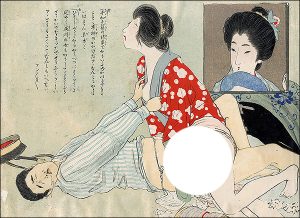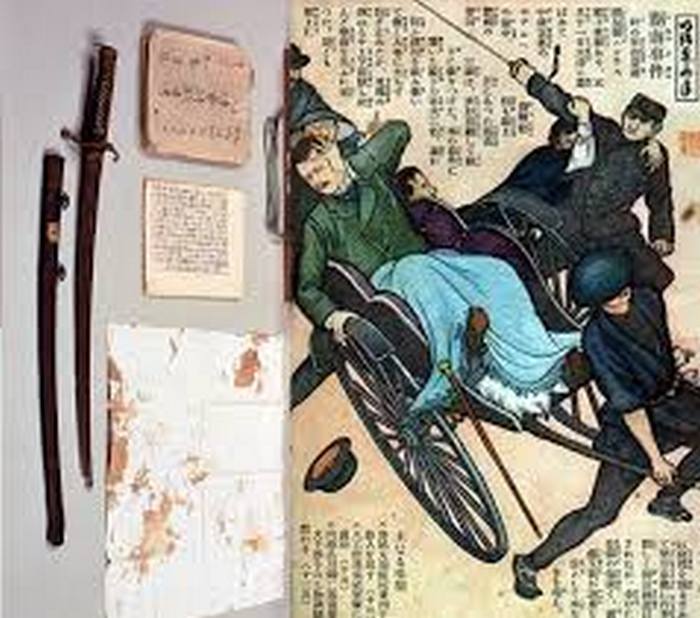Hentai History of the genre (18+)
 The appearance and development of hentai, pornographic manga and anime, is largely due to the specifically Japanese cultural and historical attitude to aesthetics and sexuality. Manga and anime in Japan in their modern form began to emerge during and after World War II. Modern hentai was only developed in the 1970s, when manga began to commercialize, and the readership, who managed to fall in love with it in childhood, grew up. To attract readers again, mangaki began to include elements of eroticism and bloody scenes in their works. Japanese laws from the Second World War until the early 1990s prohibited the graphic representation of genitals, so the creators of hentai, like any other product containing pornographic elements, were forced to partially censor them or to depict them schematically or symbolically. Flowers and shells symbolized the woman’s vagina, and snakes, fruits, vegetables – the male penis. Other techniques were also used, for example, the genitals were covered with aesthetic bondage – shibari.
The appearance and development of hentai, pornographic manga and anime, is largely due to the specifically Japanese cultural and historical attitude to aesthetics and sexuality. Manga and anime in Japan in their modern form began to emerge during and after World War II. Modern hentai was only developed in the 1970s, when manga began to commercialize, and the readership, who managed to fall in love with it in childhood, grew up. To attract readers again, mangaki began to include elements of eroticism and bloody scenes in their works. Japanese laws from the Second World War until the early 1990s prohibited the graphic representation of genitals, so the creators of hentai, like any other product containing pornographic elements, were forced to partially censor them or to depict them schematically or symbolically. Flowers and shells symbolized the woman’s vagina, and snakes, fruits, vegetables – the male penis. Other techniques were also used, for example, the genitals were covered with aesthetic bondage – shibari.
Early period
Hentai History of the genre
Shunga Yanagawa Shigenobu, approx. 1820, private collection
Most researchers agree that erotic manga and anime originate in the Edo period (1600-1868) or even earlier, although it is impossible to determine exactly how much the influence of this cultural tradition has spread to modern animators. During the Edo period, there is an interest in the genre of the kiboshi everyday novel, the plots of which were often erotic in nature. In form, the kibyoshi represented stories in drawings, provided with brief textual explanations.
Hentai History of the genre
Shunga Meiji period. Unknown author, approx. 1900
In addition, a new direction in the visual arts appears – ukiyo-e. Engravings in this style featured not only geisha and popular actors: the authors of the shunga (春 画, literally. “Spring picture”) depicted pornographic scenes where characters with exaggeratedly huge genitals took a wide variety of positions, entered into sexual acts with demons of a male and female, ghosts, animals. Characters are rarely portrayed completely naked, they are dressed in loose kimonos, which was designed to further stimulate sexual arousal. The originality of the stories was welcomed and was important due to the high competition in the market. Shunga enjoyed the highest popularity in the 18th-19th centuries. It was studied for educational purposes by girls who were soon to marry. After the Meiji Restoration (1868), shunga became illegal, however, it had a great influence on the visuals and plots of modern Japanese pornography.
1960-1970s
First anime
The first work in the hentai genre was to be the anime of Hakusan Kimura (木村 白山) “Refreshing Ship” (Japanese 涼 み 舟 Suzumibune, 1932), unfinished due to seizure by the police. Work on it was only half completed. The next serious attempt to combine eroticism and Japanese animation was made only in the late 1960s. On the initiative of Osamu Tezuki, who was trying to improve the financial affairs of his company Mushi Production and attract an adult audience into the anime industry, the adaptation of “A Thousand and One Nights” by Senya Ichiya Monogatari (1969) was filmed – the first part of the animerama erotic trilogy (animation + cinema + drama ), which later included Cleopatra (1970) and Kanashimi no Belladonna (1973). A total of 60,000 employees were hired to work on Senya Ichiya Monogatari, and it took about a year and a half to create it.
Although Osama Tezuki’s hopes were not fulfilled, under the influence of his work, the rival company Leo Production (レ オ ・ プ ロ ダ ク シ ョ в) in the same year released another erotic anime version of “One Thousand and One Nights”, Maruhi Gekiga Ukiyoe Senya Ichiya in the style of ukiyo-e. She also had problems with the law, and screenings in movie theaters were only allowed after the six most explicit scenes were cut. In general, animation in those years was considered as a purely childish direction of cinema; although in 1963, the comedic erotic anime series Sennin Buraku was televised in the night block. The last erotic work shown in cinemas was Yasuji no Pornorama Yacchimae (1971).
Erotic manga
Pornography in post-war Japan was not separated from popular culture, as in Great Britain or the USA, and pornographic images for a long time appeared in the media along with specialized magazines. Until the 1960s, children were considered the main audience of the manga. In 1968, Shueisha Corporation was preparing to release the Shonen Jump manga magazine, which, according to Shueisha, was supposed to compete with the publications for boys from Kodansha (Shonen Magazine) and Shogakukan (Shonen Sunday). One of the first works published in Shonen Jump was the comedic manga Harenchi Gakuen (lit. “Unscrupulous school”).




